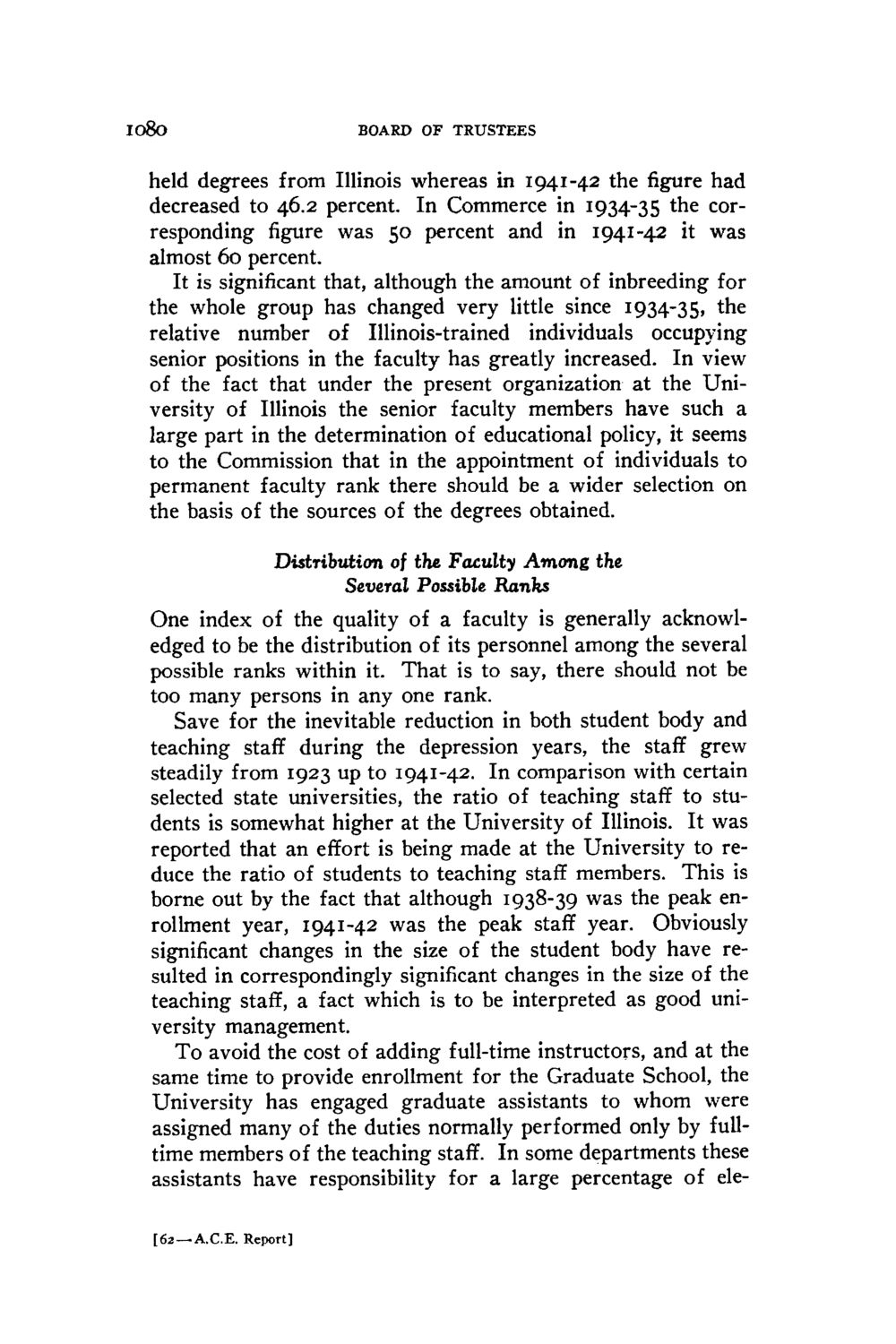| |
| |
Caption: Board of Trustees Minutes - 1944
This is a reduced-resolution page image for fast online browsing.

EXTRACTED TEXT FROM PAGE:
io8o BOARD OF TRUSTEES held degrees from Illinois whereas in 1941-42 the figure had decreased to 46.2 percent. In Commerce in 1934-35 t n e corresponding figure was 50 percent and in 1941-42 it was almost 60 percent. It is significant that, although the amount of inbreeding for the whole group has changed very little since 1934-35, t n e relative number of Illinois-trained individuals occupying senior positions in the faculty has greatly increased. In view of the fact that under the present organization at the University of Illinois the senior faculty members have such a large part in the determination of educational policy, it seems to the Commission that in the appointment of individuals to permanent faculty rank there should be a wider selection on the basis of the sources of the degrees obtained. Distribution of the Faculty Among the Several Possible Ranks One index of the quality of a faculty is generally acknowledged to be the distribution of its personnel among the several possible ranks within it. That is to say, there should not be too many persons in any one rank. Save for the inevitable reduction in both student body and teaching staff during the depression years, the staff grew steadily from 1923 up to 1941-42. In comparison with certain selected state universities, the ratio of teaching staff to students is somewhat higher at the University of Illinois. It was reported that an effort is being made at the University to reduce the ratio of students to teaching staff members. This is borne out by the fact that although 1938-39 was the peak enrollment year, 1941-42 was the peak staff year. Obviously significant changes in the size of the student body have resulted in correspondingly significant changes in the size of the teaching staff, a fact which is to be interpreted as good university management. To avoid the cost of adding full-time instructors, and at the same time to provide enrollment for the Graduate School, the University has engaged graduate assistants to whom were assigned many of the duties normally performed only by fulltime members of the teaching staff. In some departments these assistants have responsibility for a large percentage of ele[62 —A.C.E. Report]
| |